THE EARLY 19th CENTURY
In 1801 the private searching of the ruins and the export of works of art were forbidden by Carlo Fea, director general of antiquities. Excavations were now and could only be initiated by pope Pius VII. They were carried out by Giuseppe Petrini in the years 1802-1805. A painting exists of a visit by the pope, on October 4 1802. Unfortunately Petrini's methods did not differ from those of his predecessors. Digging took place around the Capitolium, and in block I,IX, block I,II, the Round Temple (I,XI,1), the Basilica (I,XI,5), the House of the Triclinia (I,XII,1), the Baths of the Forum (I,XII,6) and block V,V.

The visit of pope Pius VII on October 4, 1802. To the left is Carlo Fea. The pope is looking at a relief of Mithras.
The relief and the inscription (CIL XIV, 62) are now in the Vatican Museums. Image: Wikimedia.
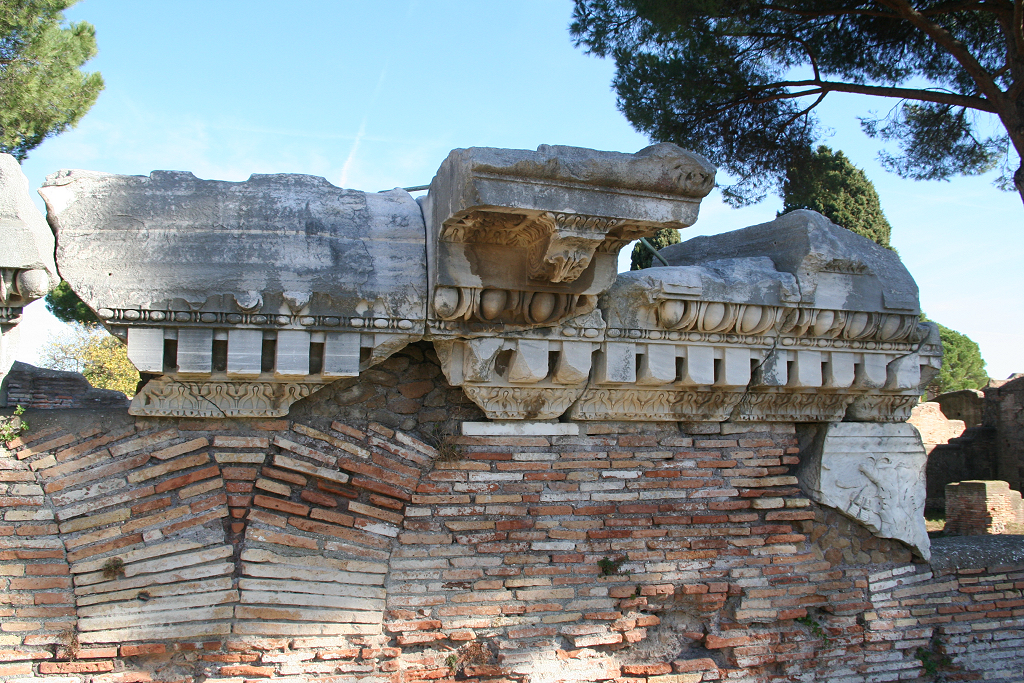
Architectural decoration of the Capitolium seen on the painting of Pius VII.
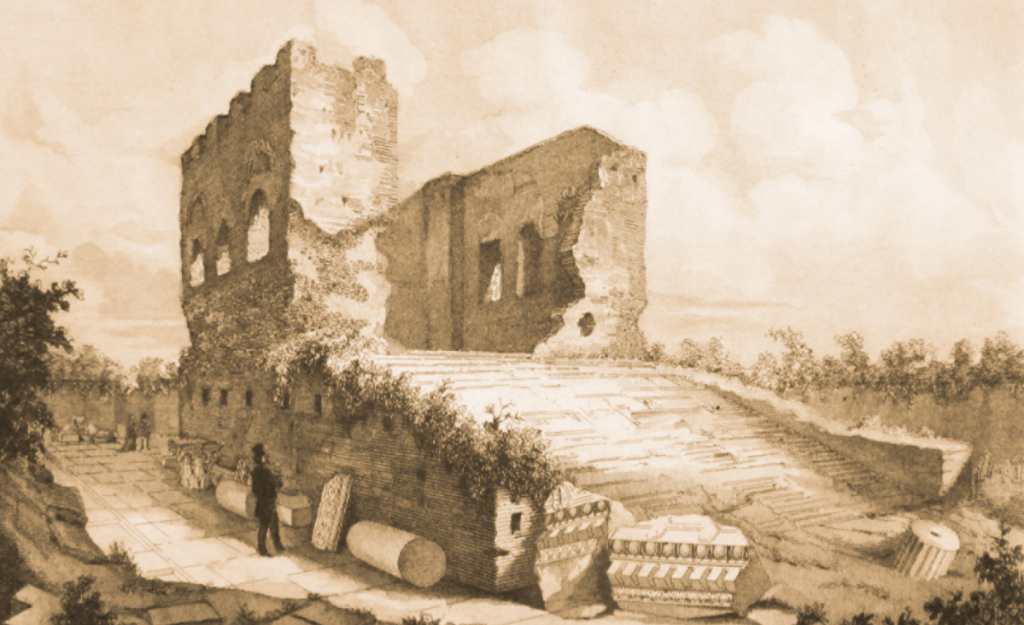
The Capitolium seen on an anonymous drawing from the early 19th century. Image: Gallico-Turco 2020, fig. 8.
A few important archaeological plans of Ostia were made, by Giuseppe Verani and Pietro Holl. On the plans we can recognize the theatre, the Capitolium, the Baths of the Forum, the Round Temple, the Baths of Buticosus, the so-called Imperial Palace, Tor Boacciana, the Baths of the Seven Sages, the House of the Charioteers, the Baths of the Lighthouse, and the Baths of the Marine Gate. The finds were listed in a manuscript of 225 pages,(1) a copy of which is in the Bibliotheca Angelica in Rome (unfortunately the text has not been published and is not available digitally). Listed are coins (thousands), intaglios, rings, inscriptions and marble objects. The list was used by Ludovico Paschetto in his overview of the excavations, published in 1912. Much lead, marble and travertine was sold for re-use, among others as parapet of the Arch of Constantine. The finds were taken to the new Museo Chiaramonti, as a compensation for many finds taken from the Vatican by Napoleon in 1797, paraded through Paris with the text: "La Grèce les cèda, Rome les a perdus; Leur sort changea deux fois, il ne changera plus" (most objects were returned after the fall of Napoleon, with military force). There were already plans however to start a museum in Ostia, in the Casone del Sale.
Between 1824 and 1834 there was a renewed hunt for treasure. Between 1824 and 1829 Pietro and Felice Cartoni were active, together with Pietro Tonelli. Among their many discoveries were baths to the north of the House of Apuleius (II,VIII,5), which were destroyed (the sources say) and buried again (new excavations started in the 2020's). During the years 1831-34 the marquis Pietro Campana worked by order of the bishop of Ostia, cardinal Bartolomeo Pacca. Many objects were found, including hundreds of inscriptions, today in the Vatican Museums and numerous museums in other countries - the export had started again.
A fairly large number of learned articles and books about Ostia and Portus was published, written by Carlo Fea, Antonio Nibby and others. New plans of Portus and Ostia were made by Luigi Canina in 1827 and 1830. What is conspicuously missing are the precise places of discovery of objects, and detailed descriptions and plans of the buildings in which the work took place. Often objects may be regarded as lost in the storage rooms of museums. This is true for virtually all small objects. Most of the ruins were filled with earth again after the work. Throughout the 19th century the actual digging was done by convicted criminals, living in the medieval borgo.
Slowly Ostia also became a tourist attraction. The site was reached with some difficulty with carriages (see the section Travellers' accounts and newspaper reports).
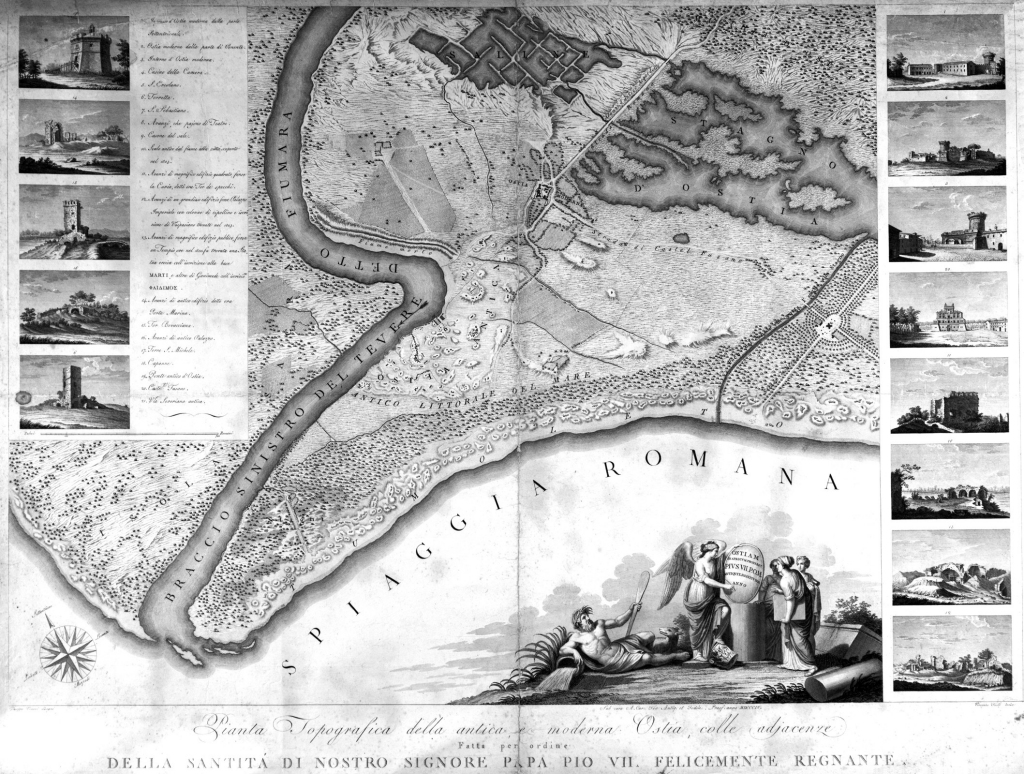
Click on the image to enlarge. Plan of Ostia in 1804, drawn by Giuseppe Verani.

Enlargement of some of the vignettes on the plan of Verani. SO I, fig. 11.
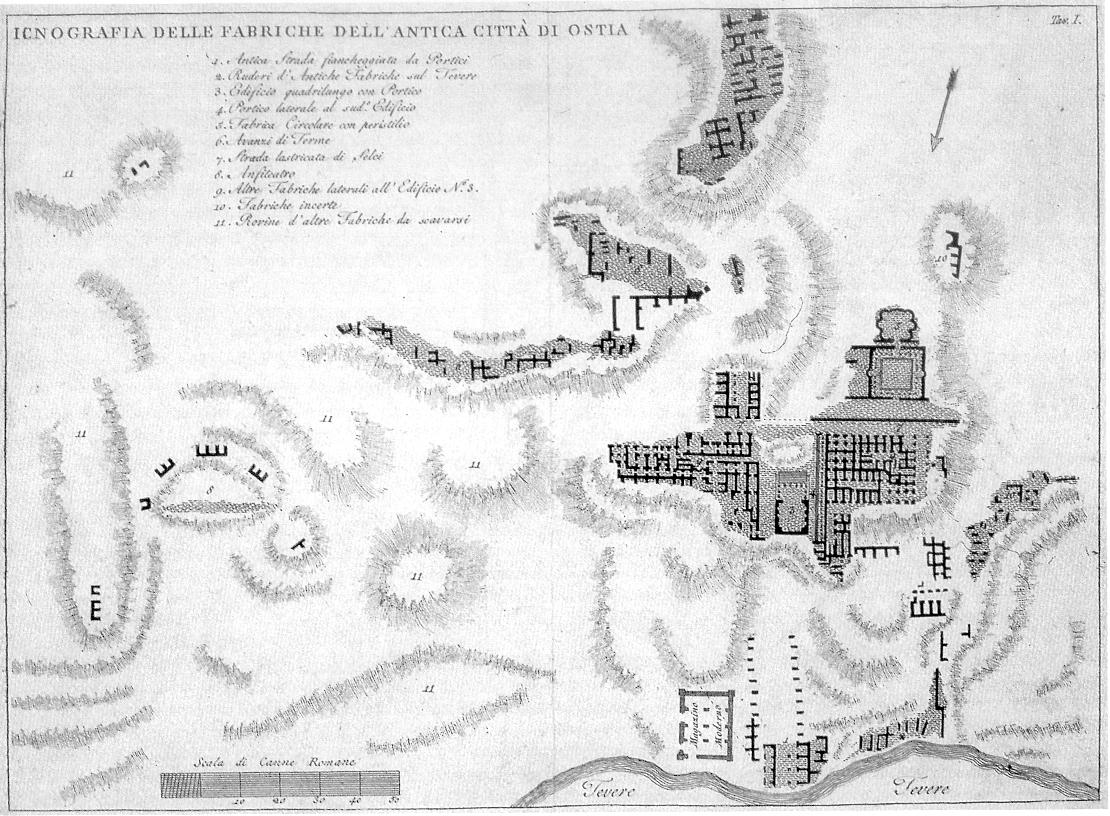
One of the plans of Ostia of Pietro Holl (1805). South is up.
To the left the outline of the theatre can be seen. To the right are the Forum and Round Temple.

Click on the image to enlarge. Plan of Ostia in 1830, drawn by Luigi Canina.
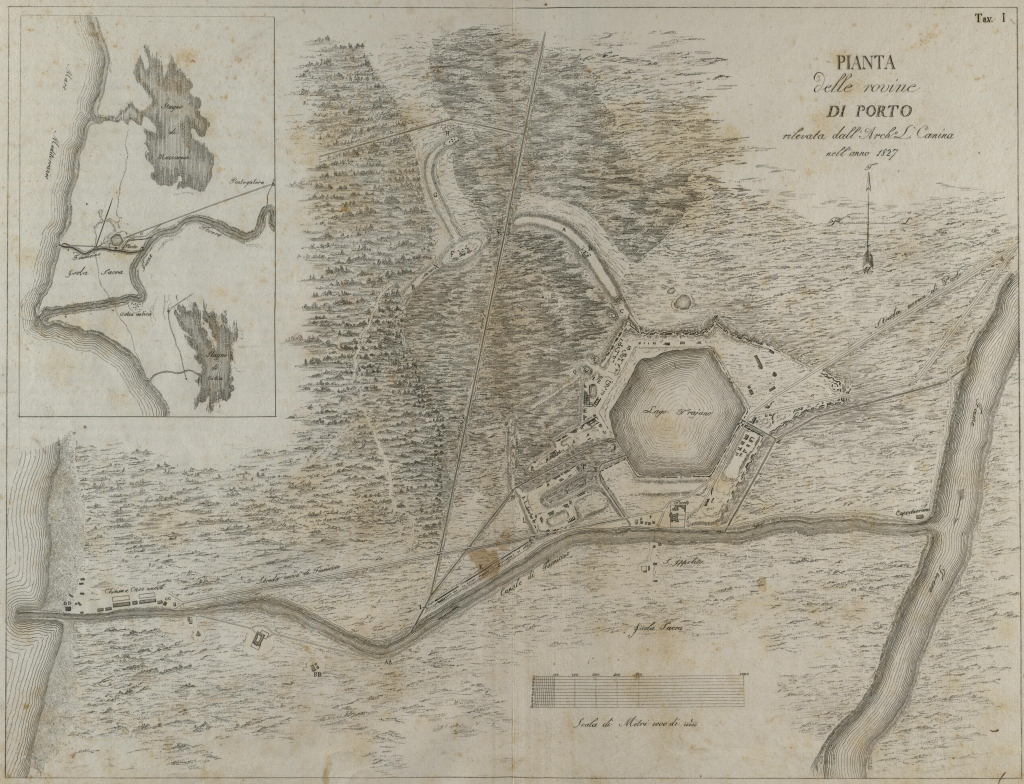
Click on the image to enlarge. Plan of Portus in 1827, drawn by Luigi Canina.
[1] "Nota Degli oggetti di Antichità rinvenuti dal cominciamento de Cavamenti pontifici a tutto Giugno 1804 sotto la Direzione di Giuseppe Petrini coll'indicazione de' Luoghi ove attualmente esistono, e coll'apprezzamento de' rispettivi Periti".